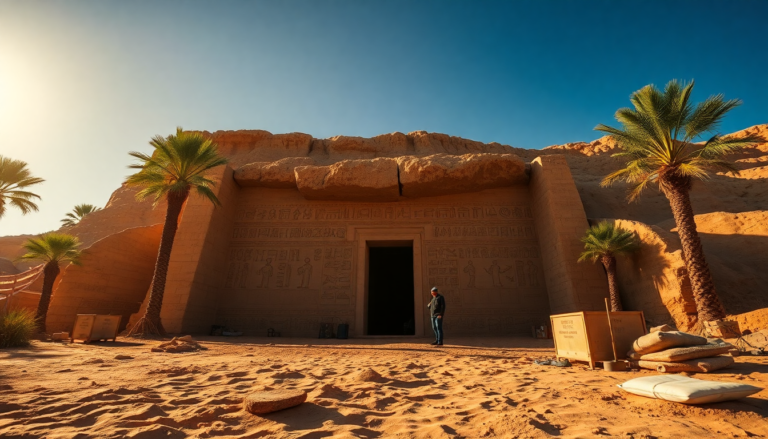The golden sun shining over Luxor has witnessed a remarkable journey of discovery in the archaeological world. For over fifty years, the tomb known as Kampp 23 lay shrouded in silence and anonymity since its discovery in the 1970s. However, recent collaborative efforts between Canadian and Egyptian researchers have finally unveiled the identity of its rightful owner, a revelation that enriches our understanding of ancient Egyptian society.
Who was Amun-Mes?
At the heart of this discovery lies the name Amun-Mes, the mayor of Thebes during the Ramesside period. This significant figure has now been definitively linked to the elaborate burial complex found in the Assasif necropolis. The collaboration between the Egyptian Supreme Council of Antiquities and the University of Ontario has shed new light on this important historical character, whose contributions to society were substantial.
For decades, Kampp 23 remained an enigma within the great necropolis of Asasif, which is part of the ancient city of Thebes—now Luxor. This area has been a treasure trove of renowned tombs belonging to influential figures. The recent research efforts have not only identified the tomb’s owner but also illuminated the roles and responsibilities held by Amun-Mes, whose titles include Royal Advisor, Divine Father of Amun, Tax Collector, and Overseer of Expeditions to the quarries for Pharaoh Ramses IV.
The artistry of the tomb
The tomb itself is a masterpiece, carved into the rock with an open courtyard framed by mud-brick walls, complete with an eastern pylon and twin niches flanking the entrance. Inside, the traditional T-shaped layout reveals intricately sculpted statues and decorations obscured by layers of plaster applied over the years. Experts believe that the tomb has undergone renovations at different stages, showcasing the evolution of artistic expression during its time.
After half a century filled with uncertainties and speculation, it is exhilarating to finally restore an identity to someone who has long been forgotten. This discovery not only highlights the workings of Egyptian society during the New Kingdom but also underscores the pivotal role played by the mayor of Thebes—a city that was among the most influential in the ancient world. Amun-Mes managed the delicate balance between royal power, the clergy, and the populace, a task that was both challenging and vital.
Collaborative efforts in archaeology
The partnership between Egyptian and Canadian scholars has not only been fruitful in terms of discovery but also symbolizes a modern tale of respect, research, and shared passion. Each step taken in the arid desert to uncover the secrets of the past speaks volumes about the commitment to preserving history and providing a voice to those who once roamed the earth.
The deeper beauty of this endeavor lies in the restoration of memory. Every ushabti figurine unearthed, every faded relief, is a fragment of a life that resurfaces from the sands of time, piecing together the mosaic of ancient Egyptian civilization. The tomb Kampp 23, once lost to the ages, now experiences a rebirth. Amun-Mes, who may have gazed upon the Nile from his city’s terraces, returns to speak across the centuries, reminding us that every discovery is a dream fulfilled.

